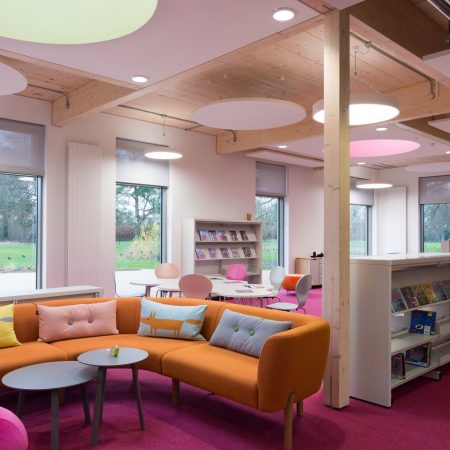A Sustainable School Building Must Still Provide an Exemplar Learning Environment
Sustainability is a key consideration in new school building programmes. Tim Parker, Osborne Framework Manager, discusses what exactly does this mean in practice? In truth there are many aspects to sustainability. Applying sustainability principles to the design isn’t necessarily the same as creating a sustainable school building.
When you explore the issues surrounding sustainable construction over the entire lifecycle of a school or classroom, it quickly becomes clear that innovative and highly collaborative approaches to design and construction are essential to address the multiple aspects of sustainability
Before getting into the intricacies of sustainability it’s worth reminding ourselves that, first and foremost, schools must function well as places of learning. Whatever we do to reduce energy consumption and limit levels of embodied carbon must be achieved in the context of providing spaces that are comfortable to be in, with plenty of daylight, fresh air, controlled humidity and excellent acoustics.
Sustainability in service is closely linked to being able to control the internal environment easily. The best foundation to achieve this is to select building components that have the desired thermal and acoustic properties built-in and use them to create an air-tight environment. Modern, offsite methods offer a high degree of control over thermal performance and air-tightness. They are well suited to the ‘build it air-tight and ventilate it’ approach. Achieving a controlled environment through the building fabric allows designers to incorporate passive approaches to heating, lighting and ventilation, with a high degree of confidence over how these will work in practice.
Embodied carbon sustainability isn’t just about energy use in service. The calculation must include the carbon generated by processing, transporting, and assembling the structure. Minimising the use of steel and concrete in favour of structural timber helps to reduce embodied carbon and create a truly net zero carbon building.
End of life sustainability applies to the entire lifecycle of the school building, from creating the component parts to construction, service, and end of life. A truly sustainable school is one that can easily be dismantled at the end of its life and the component parts reused or recycled.
Because there are so many aspects to sustainability, traditional approaches to design and build are ineffective. Designers, procurement teams and specialist contractors need to collaborate from the outset to ensure that sustainability is engineered into the layout and fabric of the buildings and that energy-efficient heating, ventilation, and heat recovery systems are fully integrated into the structure.
The Osborne InForm standardised solution meets the DfE output specification and utilises an in-house offsite manufacturer specialist. This enables Osborne to deliver 17-20% of the build value within the group adopting iFast panels, concrete floors, stairs, and roof with a 60-year design life.
The InForm solution delivers 68% pre-manufactured value, maximising the benefits of lower carbon design and in house MMC capability. InForm fully meets the boundaries of the DfE funding model and minimises both embodied and operational carbon through the RICS Whole Life Carbon Assessment stages,
Tim adds with the Osborne InForm solution 58% of the embodied carbon is sequestered/stored within the timber over the building’s life. Timber solutions have, on average, 75% less embodied carbon than masonry and metal-based build methods.
Understanding this detail really is the only way for us to collaborate and provide a sustainable low carbon school estate for future generations.”
For more information on how the InForm School Solution adopting lower carbon design facilitated by offsite MMC can achieve sustainable buildings, please visit our website or contact Tim Parker [email protected]

